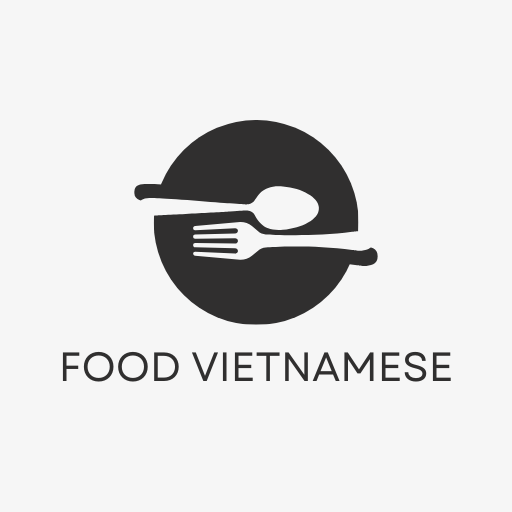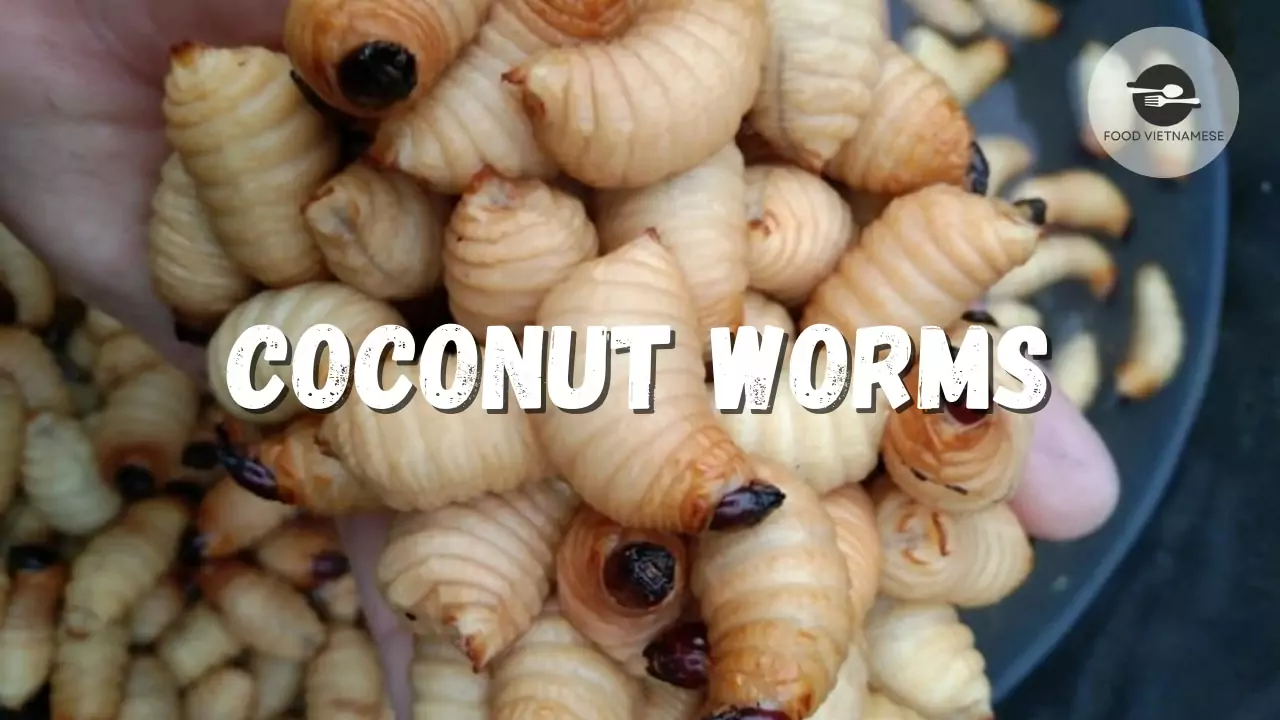Coconut worms, also known as coconut grubs, are a unique delicacy that nature has generously bestowed upon the Mekong Delta region of Vietnam. The allure of coconut worms lies not only in their delicious, rich flavor but also in how they reflect the region’s rich culinary culture and the creativity of its people in transforming local ingredients into food. In fact, this dish not only stands out in the culinary scene but also plays a significant role in the economy of the Mekong Delta. Thus, coconut worms have become an indispensable part of the local culinary culture, cherished by many diners both domestically and internationally.
Origin and History of Coconut Worms
Coconut worms primarily appear inside coconut trees, where they lay eggs and develop into larvae. This insect thrives in warm climates, particularly in tropical Asia. In Vietnam, coconut worms are well-known for their prevalence in the Mekong Delta, especially in Ben Tre province, renowned for its lush coconut groves.

Coconut Worms
According to various research documents, coconut worms are not just a dish but also carry a piece of the cultural history of the local people. From ancient times, people in the Mekong Delta have known how to prepare and enjoy coconut worms, considering them a nutritious food. Certainly, through many ups and downs, the memories and traditions surrounding coconut worms remain in the minds of many generations and are increasingly asserting their position in modern cuisine.
Coconut Worm Production Methods
The production of coconut worms typically takes place in areas with many coconut trees, where the larvae grow and develop. To harvest them, locals inspect coconut trees for signs of worm infestation. Upon discovering boreholes, they cut down the infected tree parts to harvest the coconut worms inside.
Besides natural harvesting from coconut trees, some people have begun raising coconut worms at home to supply the market. However, this practice is banned in some areas due to the risk of spreading into the natural environment and harming other coconut trees. This development has prompted the establishment of management regulations to protect the coconut industry and the local economy.
Prominent Coconut Worm Dishes
Coconut worms not only have a unique flavor but also offer a variety of preparation methods. Here are some standout coconut worm dishes you can enjoy:
- Live Coconut Worms with Fish Sauce: This is a popular dish where coconut worms are soaked in saltwater to clean them, then mixed with fish sauce, garlic, and chili.
- Grilled Coconut Worms: After being skewered and grilled over charcoal, coconut worms retain their natural sweetness and are served with aromatic herbs.
- Crispy Fried Coconut Worms: With a simple preparation method, this dish is favored for its rich and crispy texture.
- Coconut Worms Steamed with Sticky Rice: This dish combines coconut worms with sticky rice, creating a rich and flavorful experience.
- Coconut Worm Porridge: This porridge offers a delicious and nutritious taste, often cooked with coconut milk and pork.
Live Coconut Worms with Fish Sauce
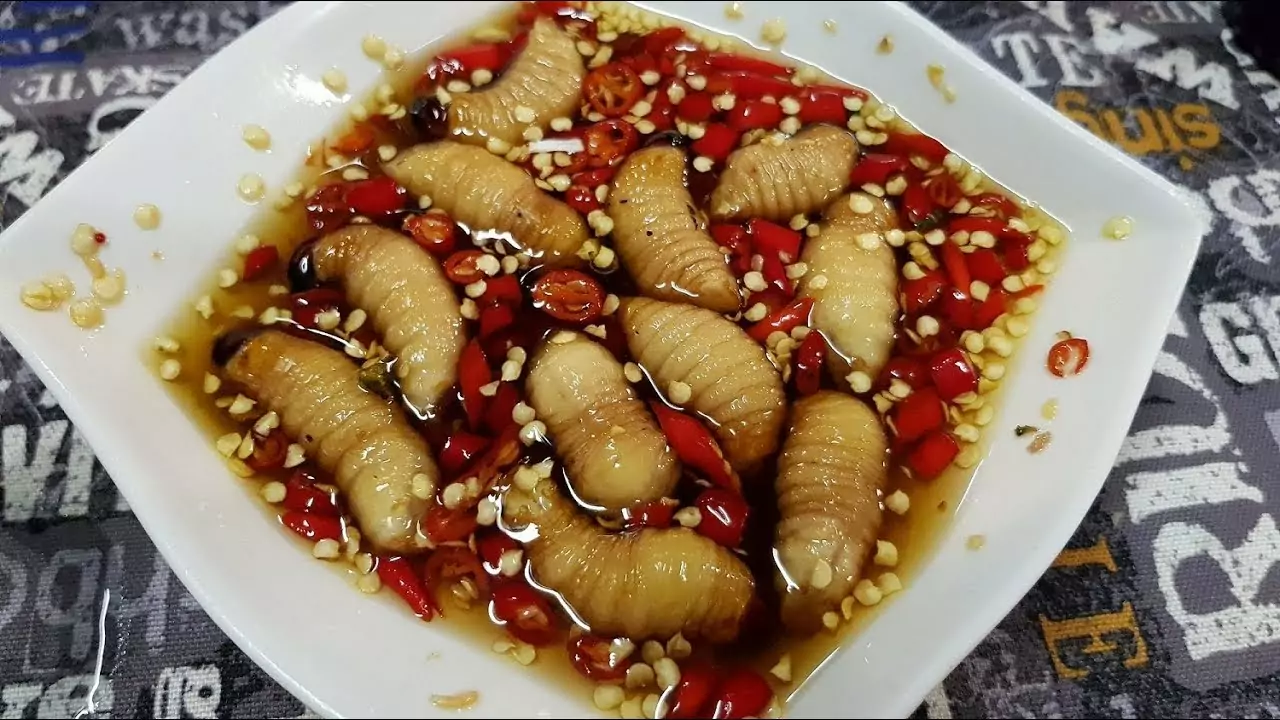
Live Coconut Worms with Fish Sauce
The dish of live coconut worms with fish sauce is not just a meal but an exciting culinary experience. Coconut worms are usually served with meticulously prepared fish sauce, with just a bit of fresh chili and minced garlic to enhance the flavor. In the Mekong Delta, traditional fish sauce with a distinctive flavor is often used to perfectly blend with the coconut worms.
When enjoying it, you will experience the sweet, rich taste of the coconut worms combined with the salty, spicy, and sour flavors of the fish sauce. This dish is often eaten with fresh herbs like fish mint and Vietnamese coriander, adding a refreshing touch to each serving. The special thing here is that when the coconut worms are still alive, they wiggle in the fish sauce bowl, creating a lively image that intrigues and delights diners.
Though a familiar dish, live coconut worms with fish sauce still evoke strong emotions, leaving a lasting impression and a desire to revisit whenever one returns to the Mekong Delta.
Grilled Coconut Worms
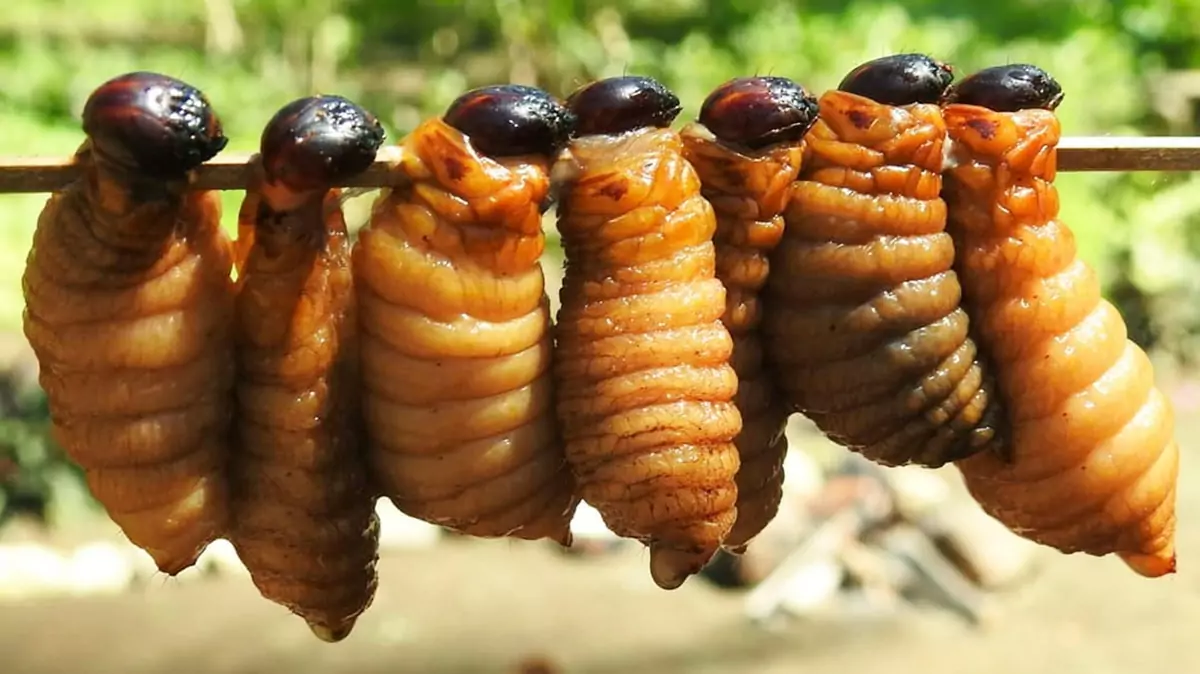
Grilled Coconut Worms
Grilled coconut worms offer a completely different flavor. The process of grilling them over red-hot charcoal not only cooks the food but also accentuates their natural sweetness. Before grilling, coconut worms are usually cleaned thoroughly and then skewered on bamboo sticks for convenient grilling.
When grilled with care, coconut worms turn golden brown and emit a distinct natural meat aroma. The sweet flavor, with a hint of smoke, makes this dish appealing to anyone. Combined with sweet and sour fish sauce or tamarind sauce, grilled coconut worms become a perfect choice for outdoor parties or friendly gatherings. Additionally, their appeal lies in the fact that even when eaten plain, grilled coconut worms can conquer the taste buds of the most discerning palates.
Fried Coconut Worms

Fried Coconut Worms
If you’re a fan of crispy fried dishes, fried coconut worms will surely satisfy you. With a simple preparation method, coconut worms are cleaned, coated in batter, and fried to a golden crisp at moderate temperatures. Once fried, they become golden brown and crispy, making anyone who sees them crave a taste.
The combination of the rich flavor of the coconut worms and the crispy batter creates an irresistible taste. This is not only a suitable snack for gatherings but can also be the main dish in family meals. Fried coconut worms are often served with fresh vegetables and dipping sauce to cut the richness.
Steamed Coconut Worms with Sticky Rice
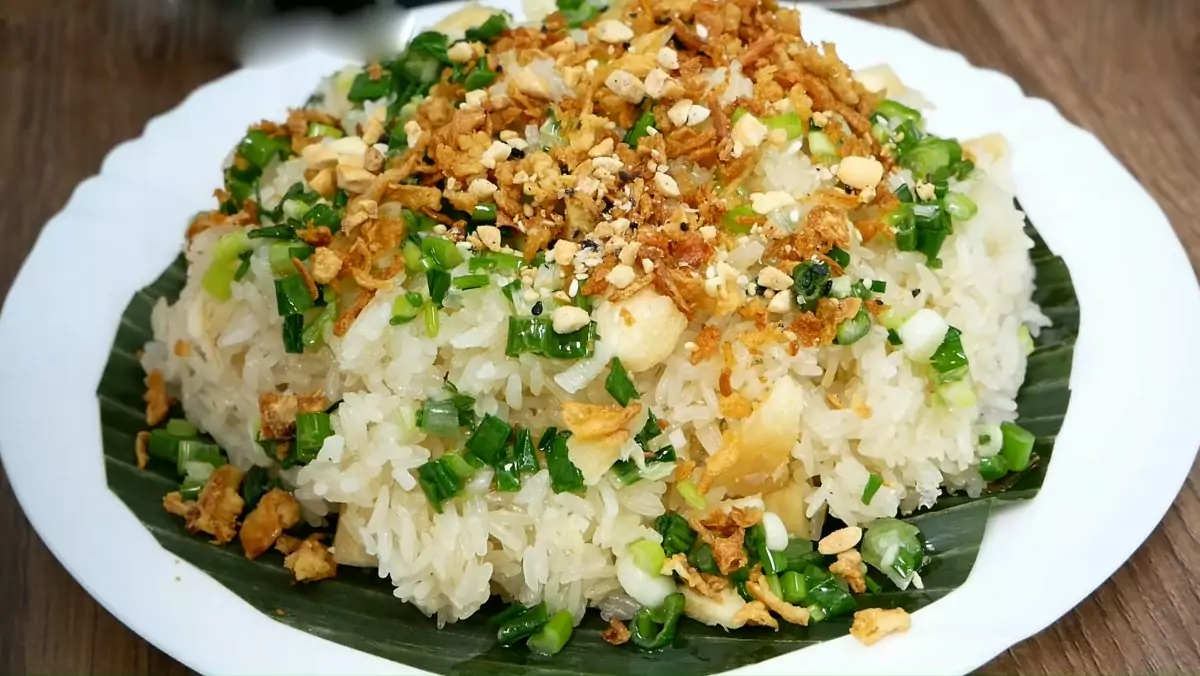
Steamed Coconut Worms with Sticky Rice
Steamed coconut worms with sticky rice is a highlight in Mekong Delta cuisine. Combining nutrient-rich coconut larvae with fragrant sticky rice, this dish offers a novel and enticing experience. During steaming, the coconut worms become tender, and their rich flavor complements the sticky rice, creating a unique culinary experience.
When enjoying it, you’ll taste the sweet flavor of the coconut worms along with the soft, fragrant sticky rice, creating a perfectly harmonious taste. You can eat the coconut worms directly with the sticky rice or mix the liquid inside the larvae into the sticky rice to enhance the dish’s rich, enticing flavor.
Coconut Worm Porridge

Coconut Worm Porridge
Similar to the dishes above, coconut worm porridge also offers a different culinary experience. The porridge is cooked with coconut milk or pork, creating a natural richness that, combined with the delicious taste of coconut worms, makes it an irresistible dish.
The preparation of this porridge is quite simple; you just need to cook the porridge as usual and add the coconut worms at the end to preserve their natural sweetness. A hot, fragrant bowl of coconut worm porridge with scallions sprinkled on top will win over anyone.
Nutritional Value of Coconut Worms
Coconut worms are not only loved for their delicious taste but also for their nutritional value. According to many studies, coconut worms are a rich source of protein, providing essential vitamins and minerals beneficial to health.
Specific nutritional components of coconut worms:
- Protein: Coconut worms are high in protein, essential for building and repairing body tissues.
- Fat: They contain unsaturated fats, which are beneficial for heart health.
- Vitamins and minerals: They provide essential vitamins and minerals that improve overall health and support the immune system.
Famous Places Selling Coconut Worms
If you have the opportunity to visit the Mekong Delta, especially Ben Tre province—considered the “capital” of coconut worms—you can find this dish at various locations:
- Ben Tre Market: This shopping hub is famous for a variety of Mekong Delta specialties, including coconut worms.
- Specialty stores: In Ben Tre, many stores offer fresh coconut worms, especially in communes like Thanh Phu, Giong Trom, Chau Thanh, and Ba Tri.
- Stores in major cities: Frozen coconut worms can also be found in some supermarkets or specialty stores selling Mekong Delta foods in major cities like Ho Chi Minh City or Hanoi.
Price of Coconut Worms
The price of coconut worms fluctuates depending on the season and timing. Frozen coconut worms typically cost about 10,000 – 15,000 VND each, while large fresh coconut worms can range from 22,000 – 25,000 VND each. This indicates that although coconut worms are becoming rarer, the demand remains high.
Notes on Using Coconut Worms
When using coconut worms, consumers should keep several important points in mind to ensure health and enjoy a delightful culinary experience:
- Preparation method: Coconut worms are often eaten raw or quickly prepared with fish sauce to retain nutrients. When eaten raw, be sure to remove the worm’s head to avoid unnecessary risks.
- Origin: The quality of coconut worms largely depends on the health of the coconut tree. Avoid harvesting from heavily infested trees to ensure the best-tasting worms.
- Health risks: Avoid using coconut worms from trees that have been sprayed with pesticides to prevent adverse health effects.
Methods to Mitigate Coconut Worm Damage to Coconut Trees
Coconut worms are not only a nutritious dish but can also harm coconut trees if not controlled. Here are some necessary measures to mitigate their damage:
- Garden sanitation: Regularly inspect coconut trees, detect, and destroy heavily infested trees to prevent the spread.
- Avoid tree injuries: Minimize injuries to trees to reduce conditions for coconut worm invasion.
- Use of specific pesticides: Using specific pesticides like Basudin 10H or SIEUGON 85GR can help control pests.
- Regular care: Regularly care for and inspect coconut trees to detect early signs of attack and optimally protect the trees.
Culture and Customs Related to Coconut Worms
Coconut worms are considered an essential dish in the feasts and festivals of the Mekong Delta people. Besides enjoying dishes made from coconut worms, people often organize parties to strengthen community bonds. This not only creates beautiful memories but also preserves the local culinary culture.
Not only do they help create delicious dishes, but coconut worms also showcase the skill in selecting ingredients and preparing unique dishes by the locals. Every family can transform them into different dishes, adding variety and richness to daily meals.
Coconut Worms in Contemporary Vietnamese Cuisine
In modern cuisine, coconut worms have gained the affection of many diners. Restaurants and eateries continuously innovate with coconut worm dishes to meet the growing culinary demands of diners. Coconut worm dishes are prepared in various ways, not only to preserve their flavor but also to showcase artistic creativity in cooking.
Thanks to the combination of tradition and modernity in preparation methods, coconut worms have become a symbol of creativity in Vietnamese cuisine. They are not only delicious but also offer unique culinary experiences for those who have tried them.
Coconut worms, with their unique blend of nature’s wonder and human ingenuity, have become an indispensable part of Vietnamese culinary culture. The beauty of this dish lies not only in its appealing taste but also in the stories, history, and essence of the Mekong Delta culture. While offering high nutritional value, the exploitation and use of coconut worms must go hand in hand with environmental protection and ecological balance, aiming for sustainable agriculture.
Try visiting the Mekong Delta, savor coconut worms, and fully appreciate the cultural culinary values this region offers. The dish not only nourishes the body but also the soul, bringing diners back to the beautiful, simple memories of their homeland.
